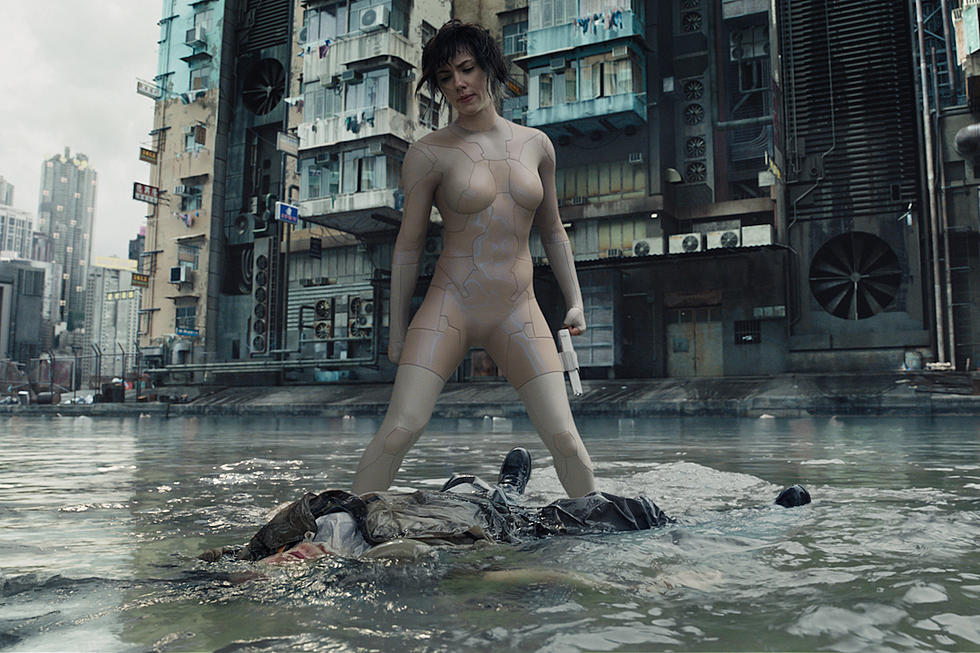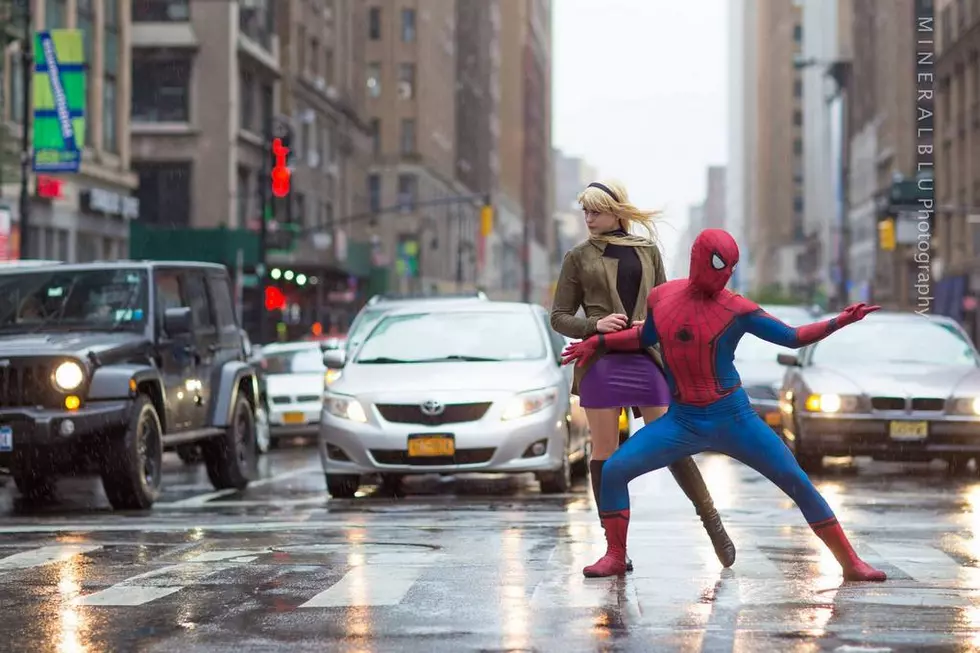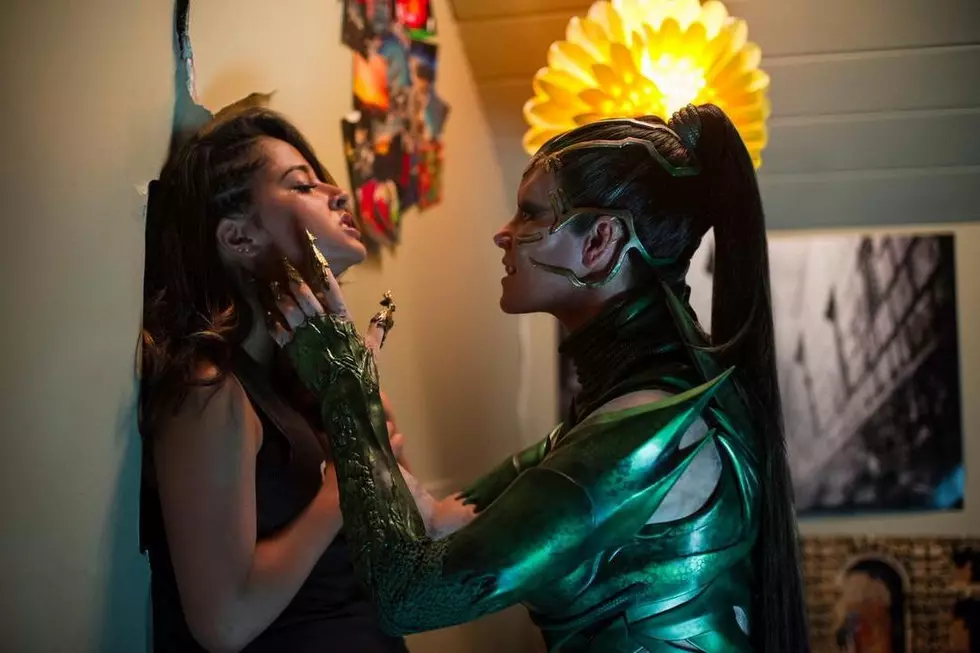![ComicsAlliance Reviews the ‘Green Lantern’ Movie [Spoilers]](http://townsquare.media/site/622/files/2011/06/untitled-1-1308189295.jpg?w=980&q=75)
ComicsAlliance Reviews the ‘Green Lantern’ Movie [Spoilers]

Directed by the Casino Royale visionary Martin Campbell, the Warner Bros. movie Green Lantern is a predominantly faithful, very family-friendly depiction of the heroic characters, fantastic worlds and memorable storylines from the beloved DC Comics series, primarily those written to huge acclaim by Geoff Johns. As was the case with Watchmen, another film based on an especially popular DC title, the makers of Green Lantern demonstrate a sincere and uncommon reverence for the comic book source material, but the final product is mainly a surface-level adaptation that doesn't communicate the darker, almost operatic elements of Johns' work that have so profoundly galvanized the Green Lantern concept after so many decades.
SPOILERS follow.Green Lantern takes its inspiration mainly from Green Lantern: Secret Origin by Johns and Ivan Reis, particularly the humanity of its characters and its focus on familial and romantic relationships. We see the death of Hal's father, his strained relationship with his surviving family, and his multifaceted relationship with Carol Ferris. Indeed, most of the film's characters are given quite a lot of backstory along those lines, and the telling of those many earthbound stories make up the bulk of Green Lantern's 90-minute runtime.
In the comics, the death of Hal Jordan's father infused the young man with the kind of pathos required of the fearless, devil-may-care bad boy whose demons are tempered by the Green Lantern Corps. In Campbell's upbeat film, the death of Hal's father only prompts the young Jordan to grow up and become the relentlessly jocular Ryan Reynolds, whose strife with his family (including his admiring, airplane-obsessed nephew) are dramatically introduced but never revisited.
His friction with Carol Ferris, the brilliant pilot and on-again, off-again girlfriend whose family business Hal routinely endangers, is similarly invoked and then set aside simply because Hal Jordan is just that cool. Ferris is played by Blake Lively, who bounces back and forth well enough between these dimensions of Carol, but the ten-year age gap between her and Reynolds is distractingly obvious, so much so that at times you're forced to wonder exactly when the implied backstory took place -- when Carol was 12?
Played as an amusingly demented and deformed John Malkovich by Peter Sarsgaard, the villain Hector Hammond will give kids a thrill with his full-on gross-out mutant head, but his motivations are hard to track: the students at the community college where he teaches science are slackers, he's fed up with being "just friends" with Carol while she "like-likes" handsome Hal, and his dad is kind of a dick. Senator Robert Hammond is played by Academy Award Winner Tim Robbins as condescending and smarmy, and we are made to understand that he's disappointed with the meager professional achievements of his son. Unfortunately for Hector, who we're meant to see as a kind of tragic villain, the text doesn't jibe with Robbins' and director Campbell's apparently nefarious take on his Senator dad.
Not only a great government partner to Carol Ferris and her family's business, Senator Hammond goes out of his way to make his xenobiologist son the go-to guy for Amanda Waller after the discovery of Green Lantern Abin Sur's dead body. This affords the younger Hammond an incredible professional opportunity and affirms his lifelong belief that extra-terrestrials exist, something that has presumably alienated (heh) him from his family and peers, like Hal and Carol, whom he's known since childhood. Despite this rather splendidly generous move on his father's part, Hector's bitterness persists and is only amplified after accidental contact with Parallax, whose energies were hiding in Sur's wounds. Now able to read minds, Hector confronts his father for giving him an unfair leg-up in the emerging alien autopsy game. Naturally, Senator Hammond thinks something along the lines of, "What an ungrateful prick," and Hector subsequently kills him.
As the one major DC Universe "easter egg" for fans, the Amanda Waller character is particularly vexing. Aside from the fact that she's accurately depicted as an African-American woman, Green Lantern's version of Waller is nothing like the domineering, omnipotent and decidedly full-figured authority feared by every superhero in the DC Universe. In this film, Waller is the kind of vaguely defined government super scientist we've seen in all manners of Hollywood schlock, taking the form of the eminently sexy Angela Bassett, complete with her stiletto science heels. As I'll explain later, Green Lantern does a very good job of realizing the comics' more conventionally unbelievable characters and environments, so it's disappointing that Amanda "The Wall" Waller, as human a character as you can find in the DCU, didn't make it into the film intact. In keeping with the film's noble efforts to give every character some weighty emotional motivations, Waller's tragic family backstory from the comics is seen in a quick flashback, although none of it has any impact on her character or the plot since her role is essentially a cameo.
While the drive-by style of character development creates an uneven narrative in Green Lantern, the film's cast is effective at processing the material into believable characters, although the performances do have more in common with Buffy the Vampire Slayer than The Dark Knight. Comparisons to Han Solo have been wildly exaggerated, but Ryan Reynolds' Hal Jordan does approximate some of the space hero's gravitas while in his Green Lantern guise and interacting with his follow Corps members. Reynolds assumes the posture needed to make us understand the immensity of the world he's become a part of, and the filmmakers succeed in depicting how wielding the ring and using its unique imagination and will-based powers can be a lot harder than it sounds.
The whole show is unquestionably stolen by Mark Strong in his role of Sinestro. Working beautifully with Green Lantern's makeup and visual effects designers, Strong makes his exotic, implacable champion of the galaxy leap right off the comic book page. His cruel mockery of Hal notwithstanding (because it's definitely enjoyable seeing Ryan Reynolds' smarmy version of Jordan take it on the chin in this movie), Sinestro seems like the natural hero and the truly mightiest Green Lantern of all, which is of course how it should be at this stage of the mythology. Really, you find yourself wishing the entire film was about Sinestro protecting the universe and that Jordan would be introduced in a later sequel.
Of course, we know Warner Bros. hopes to make a Sinestro-heavy film later, as made plain by a post-credits tag in which the character slips the yellow ring of fear over his finger and transforms into a Yellow Lantern. Visually, it's one of the more arresting images in Green Lantern, depicting the brightly colored future villain standing against a plain black background. While thrilling for the inner fanboy or fangirl, the moment is made utterly weird by the fact that the audience has just seen a Sinestro wholly obedient to the Guardians and without any hint of ambition beyond his station.
The overall tone is decidedly less serious than fans the comics may prefer, but Green Lantern generally succeeds at bringing to life the cosmic elements of the DC source material, as you've no doubt gleaned from much of the promotional images and video released in advance of the film. If you think the planet Oa and the Green Lantern Corps look "pretty decent" on your television or computer monitor, they'll look pretty great on the big screen. There are loads of beautiful design elements to take in and many, many GLC characters for children to become obsessed with. I was pleased to see that the Green Lantern uniforms look extremely similar to those in the comics when they're not all Tron'd out, which seems to occur during periods of intense ring usage.
Unsurprisingly, Lanterns Tomar Re and Kilowog emerge as far more engaging characters than any of Jordan's earthbound friends, but each of them appears in just a small handful of scenes, most of which you've already watched in trailers and the sorts of preview clips made available here on ComicsAlliance. To the filmmakers' credit, the characters are presented just as they are in the comics and in a way that makes them come to life on screen. There's just not enough of them.
The film's version of Parallax actually eclipses the comic's in one way, but falls short in another. The terrifying space beast of DC's Green Lantern is replaced in the film by an extremely creepy, corrupted Guardian who's surrounded by the countless yellow souls of all the beings he's destroyed over the eons, creating a kind of cloud effect. The innovation of a Guardian becoming Parallax is very cool and arguably an improvement over the insect-like entity of the comics, but the impact of the character is diminished by uneven visual effects. Sometimes the cloud looks like a menacing, vaguely Lovecraftian monster with gruesome appendages that reach out and crush entire planets. Other times it looks like muddy water.
The audience's biggest complaint about Green Lantern will be that the Corps itself is given precious little to do, particularly so soon after the greatly satisfying Asgardian action in Thor. The aforementioned training scene offers some very creative applications for the power rings, and Hal rescues a crashing helicopter in a charmingly cheesy way that should please comics fans, but an unambiguously foreshadowed attack on Oa by Parallax is never realized. Sinestro and the Guardians explicitly say that Earth cannot be defended for fear of leaving Oa open to Parallax's wrath, but instead the fear monster is drawn to Earth by Hector Hammond for revenge upon Hal Jordan, whom Parallax seems eager to kill just by virtue of the fact that he's Abin Sur's successor.
Fighting solo, Hal's solution to the Parallax problem is quite clever and is based in the training he received on Oa, but still pales in comparison to what the viewer is led to believe will be a glorious space battle in the tradition of Star Wars. Hopefully a sequel in the vein of The Sinestro Corps War will fulfill this promise.
That so much of Green Lantern is dedicated to the interpersonal relationships of its fairly large cast is actually quite an admirable move for a superhero film, for they're often criticized for the arbitrary behavior of their characters (just read ComicsAlliance's reviews of Batman Returns, for example). But what Geoff Johns used as emotional fuel for his characters' dramatic actions in the Green Lantern comics amounts to something more like lip service in Martin Campbell's relatively perky film.The same is true for the fear vs. will question at the heart of the Green Lantern mythos. The words are there, the themes are there, but something rings hollow (no pun intended).
Green Lantern opens this week from Warner Bros. Pictures.
More From ComicsAlliance









